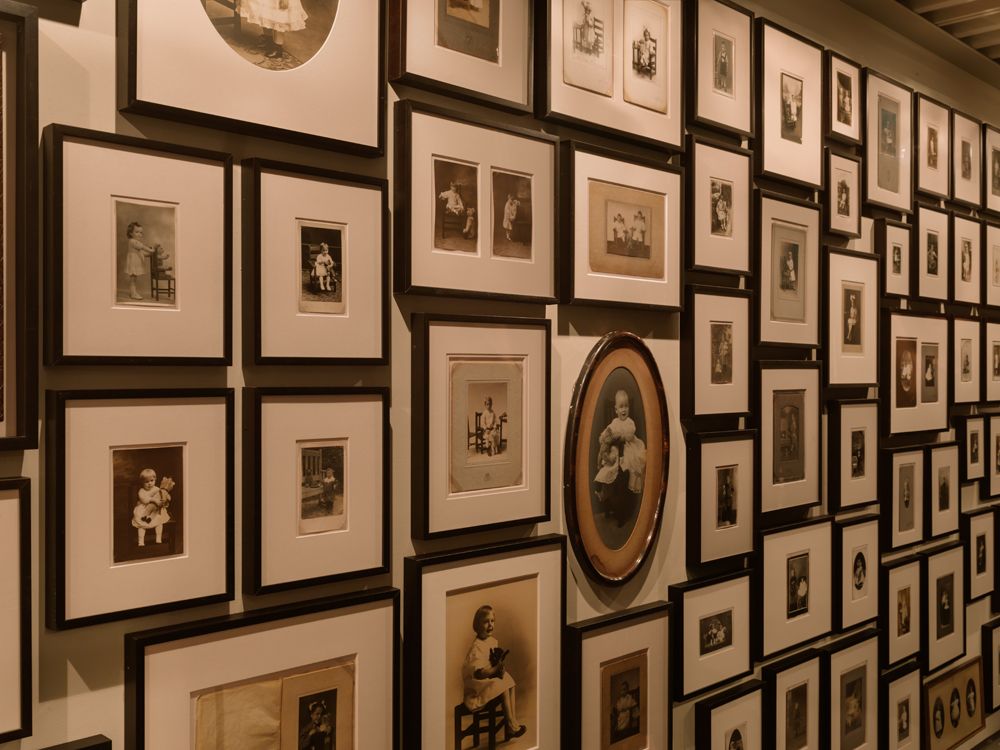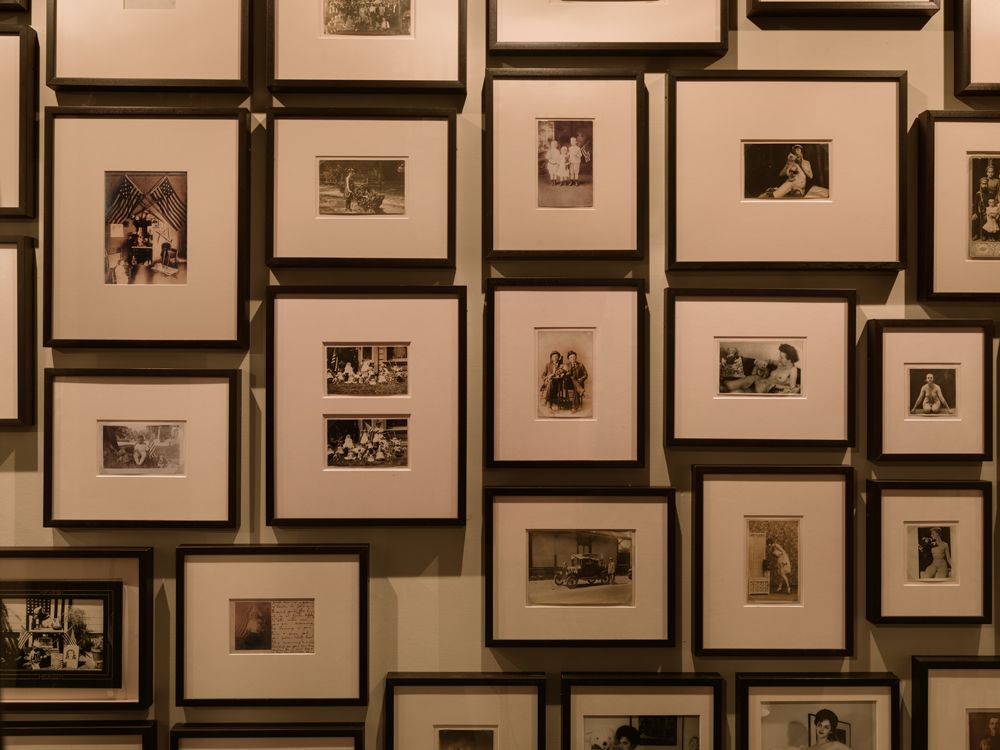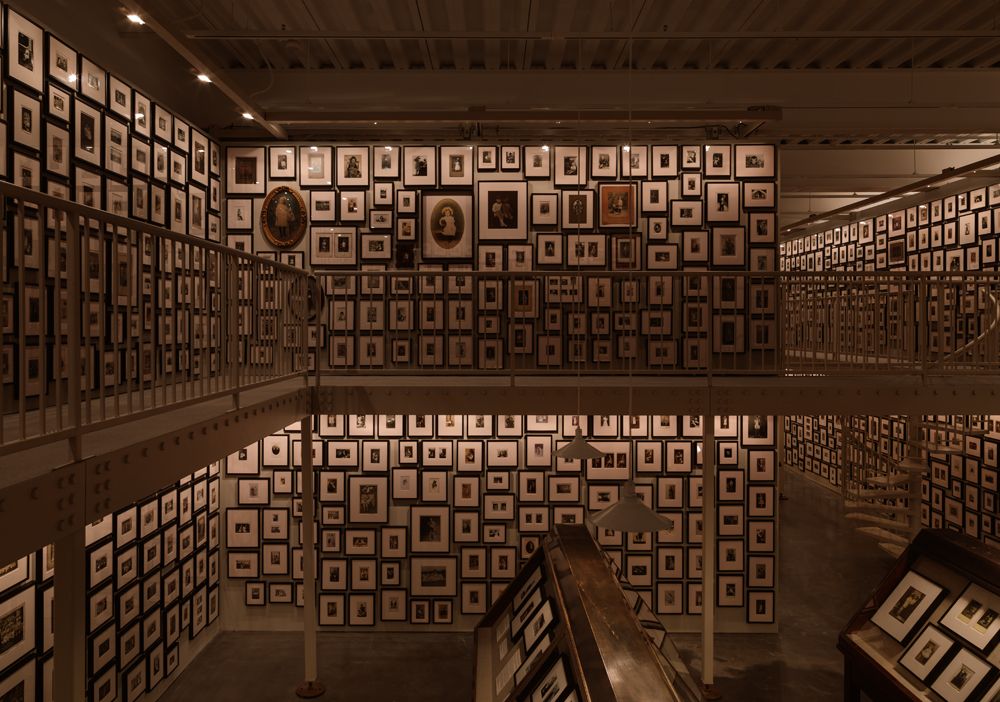This Is What 3,000 Photos of Teddy Bears Look Like
An exhibition at The New Museum takes collection obsession to an over-the-top (but adorable) extreme
Teddy bears have long been an emblem of comfort and security. From a child clutching his stuffed bear close after hearing something go bump in the night to a kindergartener proudly sharing her beloved toy during show-and-tell, the cute stuffed animals have long been synonymous with youth. But in “Partners (The Teddy Bear Project)” (2002), a massive photo installation by curator and collector Ydessa Hendeles that’s on display now through September 25 at the New Museum in New York, it’s apparent that a teddy bear’s reach goes way beyond childhood.
"Partners" is epic in both size and scope: It spans two spiral-staircased, two-story rooms stuffed with more than 3,000 photos. Each photo is connected by a common thread—it depicts one or more teddy bears. Hendeles began the project, which serves as the anchor of a larger exhibition on collecting called “The Keeper”, years ago, after flipping through her own family photo albums and noticing multiple photos taken with teddy bears. She began to scour eBay and other sources for more and thus a collection was born. (This is the exhibition's U.S. debut. In 2003, it opened at Haus der Kunst, a museum in Munich.)
But Hendeles wasn't content to tuck her finds safely into photo albums and store them in her attic. Instead, she decided to create a massive—OK, that’s a bit of an understatement—exhibition. To maintain some semblance of organization, she grouped images based on different categories, such as body posture and social class. Other, more obvious taxonomies include celebrities posing with bears (Think: Elvis, Shirley Temple and the Beatles) to groups of adults, martinis in hand, taking a moment from socializing to pose for photos. The exhibition also contains images of children, teddy bears in tow, visiting Santa Claus. All told, there are approximately 100 subgroups in the exhibition, says Natalie Bell, an assistant curator for the New Museum who worked on the project. In addition to the photos, several antique teddy bears are also on display.
“In general, teddy bears serve as both a historical marking point and a cultural icon,” Bell tells Smithsonian.com. “Within this massive but also very specific project, visitors will encounter not just the history of the teddy bear, but also the convergence of one particular object that took on significant importance." Bell says that the exhibition is intended not just to showcase the stuffed animals, but to help vistitors understand how bears become part of people's personal narratives.
“Any photo with a teddy bear is almost always going to be from the 20th or 21st century,” says Bell. That's thanks to former President Theodore “Teddy” Roosevelt, who, in 1902, famously refused to shoot a bear during a hunting trip. (Roosevelt said it was unsportsmanlike to kill the bear after it had been cornered by hunting dogs.) This mark of goodwill earned him the nickname “Teddy” and resulted in The Washington Post running a cartoon of the storied scene. Later, the wife of Morris Michtom, a Brooklyn candy shop owner, made two stuffed bears and placed them in the store window after asking the president permission to name them after him. The bears proved so popular that they eventually were mass-produced. Today, you can find similar versions in practically any gift shop, toy store and children’s bedroom.
In her artist’s statement, Hendeles writes that “the teddy bear functions as a transitional object, part anthropomorphic subject and part prop.” She references research done by the late psychoanalyst D. W. Winnicott, who theorized that teddy bears serve as a “transitional object that’s a comforting surrogate that facilitates an infant’s detachment from his or her mother by warding off trauma or loss.”
Keeping that in mind, is there any question as to why people of all ages are drawn to the sentimental keepsake? Bell, for one, can appreciate the connection. “What’s brilliant about the installation is that there’s something different that draws in each viewer,” she says. “Perhaps a certain image looks familiar, or you’ve taken a similar one yourself and have it on display at home.”
And with thousands of teddy bear portraits on display, chances are high that you’ll find one that triggers a childhood memory of your own.
/https://tf-cmsv2-smithsonianmag-media.s3.amazonaws.com/filer/8f/44/8f4474f4-6751-49dc-a413-c13fcf5bda95/teddy_bear_view_1.jpg)
/https://tf-cmsv2-smithsonianmag-media.s3.amazonaws.com/filer/8f/a7/8fa73868-9aff-4b62-8736-6ecefe273662/teddy_bear_detail_1_1.jpg)


/https://tf-cmsv2-smithsonianmag-media.s3.amazonaws.com/filer/1b/e7/1be7a0f6-b36e-42c9-9bc7-ecdc571341bc/teddy_bear_view_6_scale.jpg)
